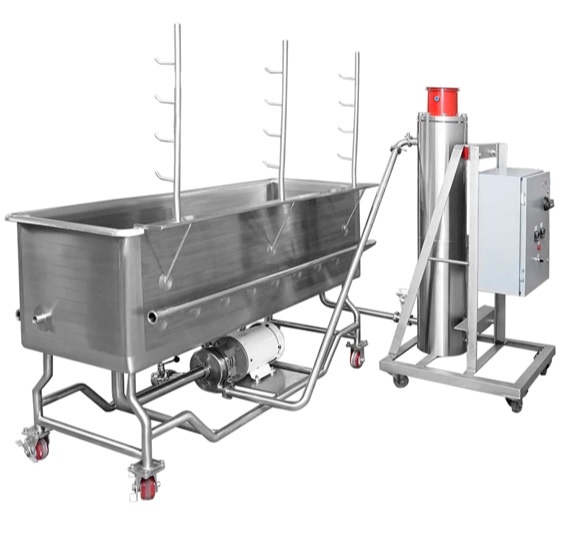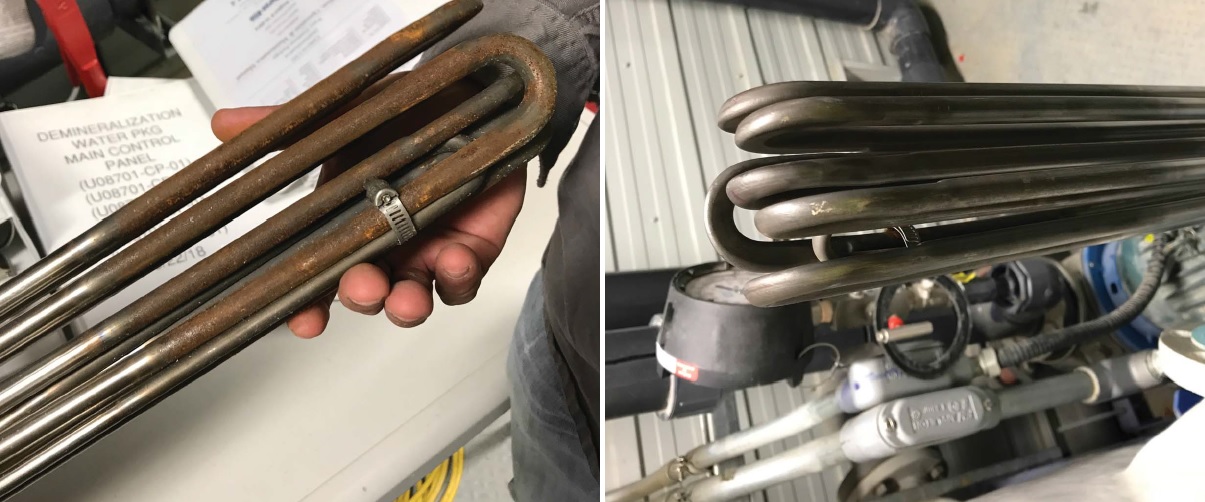FAQ FOR IMMERSION HEATERS
 What kind of immersion heater do I need?
What kind of immersion heater do I need?
Depending on your application, there are a variety of different models to chose from. For smaller applications, screw plug heaters are useful for their low cost and ease of replacement. For larger applications flanged heaters are used for their ability to handle high loads of power and larger volume of liquids. For applications that require elements from the top of a container, over the side heaters are selected. Each product has the option of coming with a mechanical thermostat or a digital controller for more precise temperature requirements. Standard NEMA 1 terminal housing is always available, NEMA 4 moisture-proof and NEMA 7 explosion proof housing for more volatile environments.
How often should I maintain the heater? 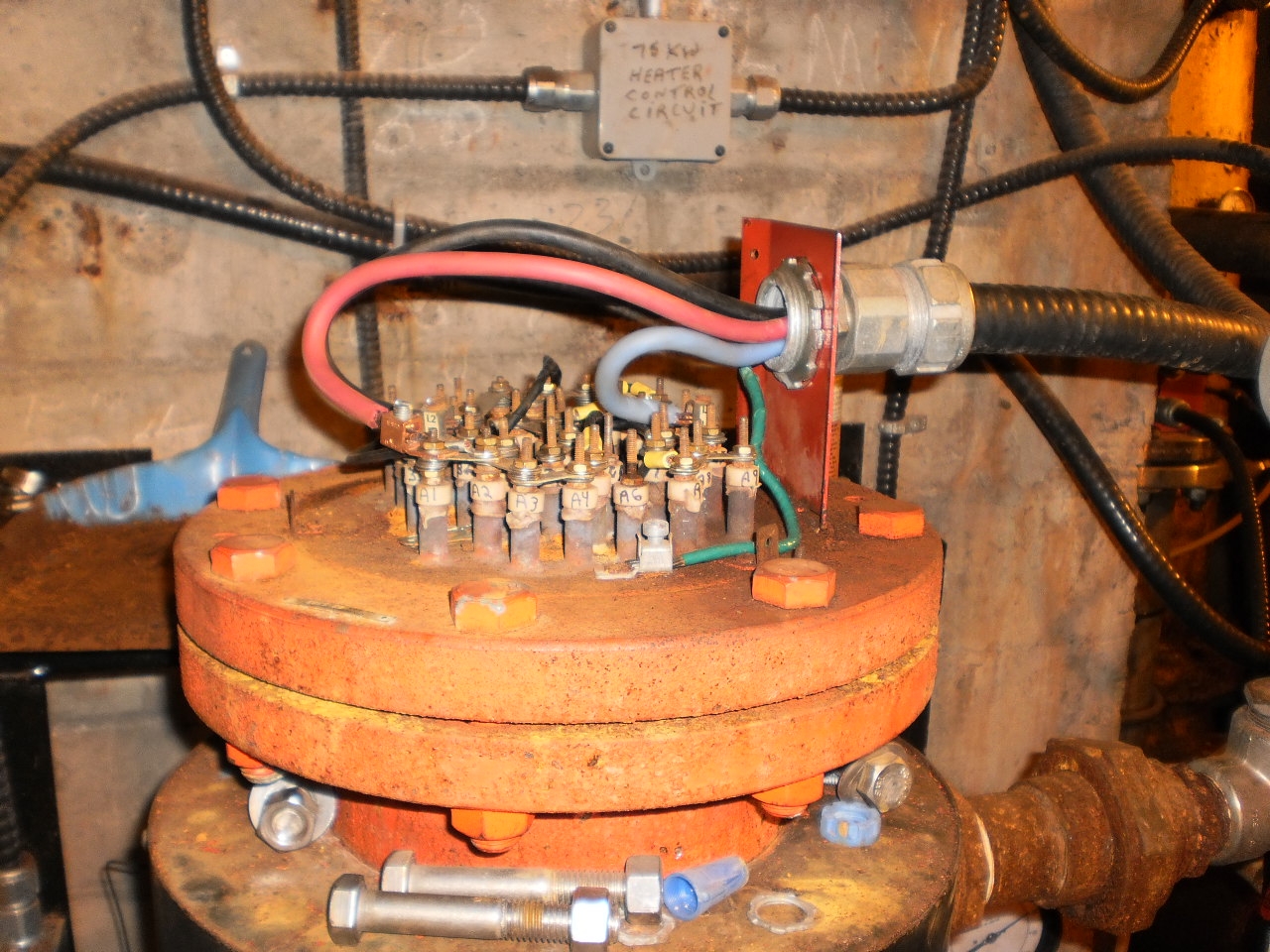 Heaters should be maintained on a regular basis. Depending on the medium you are heating, each application should be thought out carefully. Water based liquids might have calcium deposits that stick to the sheath and, would require frequent maintenance. Heavy water should be treated to prevent calcium deposit (normally identified as a white powdered substance) from sticking on the individual elements.
Heaters should be maintained on a regular basis. Depending on the medium you are heating, each application should be thought out carefully. Water based liquids might have calcium deposits that stick to the sheath and, would require frequent maintenance. Heavy water should be treated to prevent calcium deposit (normally identified as a white powdered substance) from sticking on the individual elements.
Do I need a high limit safety switch?
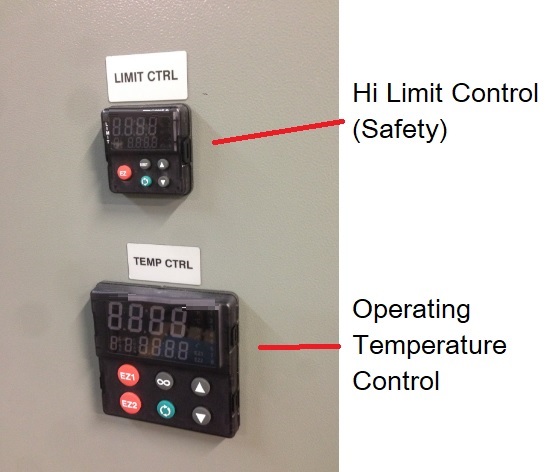 High limit safety switches are an inexpensive and valuable tool to help protect heaters and the solution you are trying to heat up. Often inserted into a thermowell within the bundle of elements, they are set to a maximum temperature range that would shut off in case of overheating.
High limit safety switches are an inexpensive and valuable tool to help protect heaters and the solution you are trying to heat up. Often inserted into a thermowell within the bundle of elements, they are set to a maximum temperature range that would shut off in case of overheating.
Do I need a mechanical thermostat or a digital controller?
Mechanical thermostats are an inexpensive tool to set your temperature of your heater using a capillary and bulb that is inserted in a thermowell within your heater. The limitations of this device are the amperage load it can handle (often around 15 Amps for a 3 phase, and 25 amps for single phase). Applications that require more precise measurements use digital controllers that have relays, fuses, contactors and are available in standard NEMA 1 terminal housing, NEMA 4 moisture-proof and NEMA 7 explosion proof housing for more volatile environments.
If I have a sample from another company, can Wattco make it?
Our facilities offer the flexibility of making most any heater in the market. We would normally require the sample to be sent to us to verify dimensions, power rating etc…
What is the warranty of your heaters?
Wattco offers a 1 year warranty against manufacturing defect. Please see our Terms and Conditions for more information.
What is Watt density?
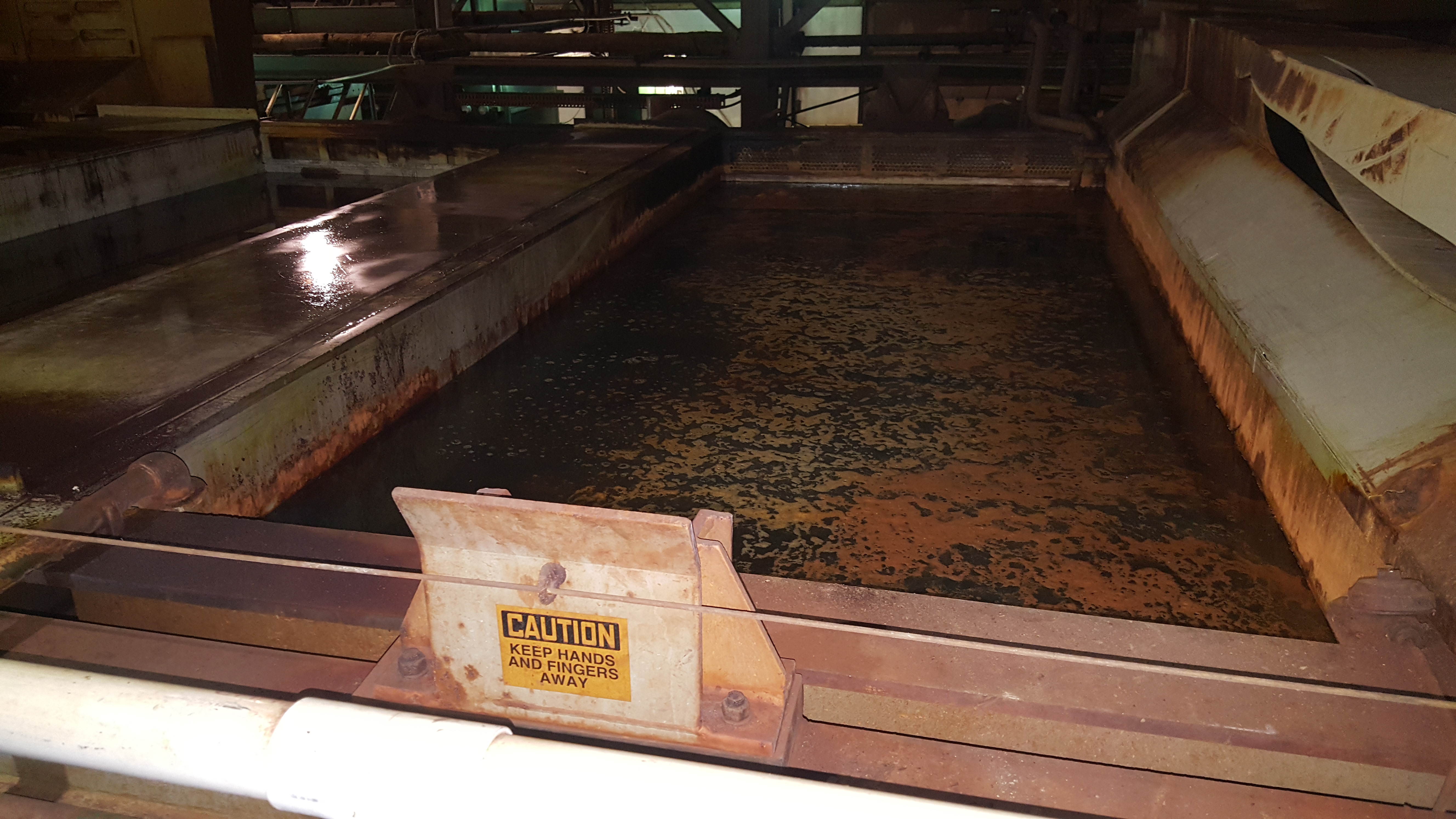 Watt density (WPSI) is a term used in the heating industry that describes the amount of permissible wattage over a surface area of a heater. Water has a typical watt density of 65 WPSI where as Oil would have much less because of its viscosity. When ordering a heater, it is always important to indicate to our sales group the medium for which you are heating.
Watt density (WPSI) is a term used in the heating industry that describes the amount of permissible wattage over a surface area of a heater. Water has a typical watt density of 65 WPSI where as Oil would have much less because of its viscosity. When ordering a heater, it is always important to indicate to our sales group the medium for which you are heating.
Typically when you are heating unclean filmy water it is important to maintain the cleanliness of your tank and consider watt density as a way to help prolong your heaters life. If deposits are in contact with the tubular element, it will stick to the sheath and will eventually lead to failure because the heat from the inner tubular coil cannot dissipate into the liquid medium easily.
What should I do if my element is leaking?
Having older heating elements without maintaining them can eventually lead to problems. It is very important to create a maintenance schedule and have your heaters inspected periodically to help avoid costly shutdowns. Easily identifiable indicators can give hints that an inexpensive necessary replacement is required and you can avoid costly shutdowns. In this image you can see that rust is accumulating around the tubular elements which can be a result of several problems: humidity in the operating area, the terminal can be exposed to water splashing or the heater is just old and needs replacing. Preventable steps can be extremely useful in the long run.
What is the difference between On-Off Control and Proportional Control?
 On-Off Control (or a Cigna Control) is like using a light switch. The light bulb either goes on or off. This type of control increases the output as long as the temperature is below the set point. It also decreases the output if the temperature rises above the set point. This is typically called “reversed action” and is commonly used in home heating using a thermostat.
On-Off Control (or a Cigna Control) is like using a light switch. The light bulb either goes on or off. This type of control increases the output as long as the temperature is below the set point. It also decreases the output if the temperature rises above the set point. This is typically called “reversed action” and is commonly used in home heating using a thermostat.
But sometimes, applications require a gradual more controlled power flow in their application. That’s where Proportional Control would be used. The main difference between On-Off Control and Proportional Control is the ability to manipulate output by modifying available power anywhere between 0-100%. The process then adjust itself to the set point by manipulating the power to suit the target temperature. If the process works properly, the temperature controller will accurately control the output power to match the target requirements of the process, and achieve total stability with the control. This is something that the On-Off Control cannot achieve.
What is the difference between an SCR and an SSR?
A Silicone Controlled Rectifier (SCR) is mostly used in applications involving medium to high voltage. It is used dimming (ie lamp bulbs) and is a favorite for project that require complete control of power output in a heating application. Another value is that it could extend the life of a heater as it regulates the power output in a more controlled fashion (think about how much damage is incurred with the slamming the brakes of a car. SCRs avoid the “On-Off” power surges with a control release of power).
Solid-State Relays (SSR) is an electronic switch (no moving parts) that turns on and off the process using a small voltage supply. Heat sinks are typically used to dissipate the generated heat in this method.
What is that white stuff on my elements?
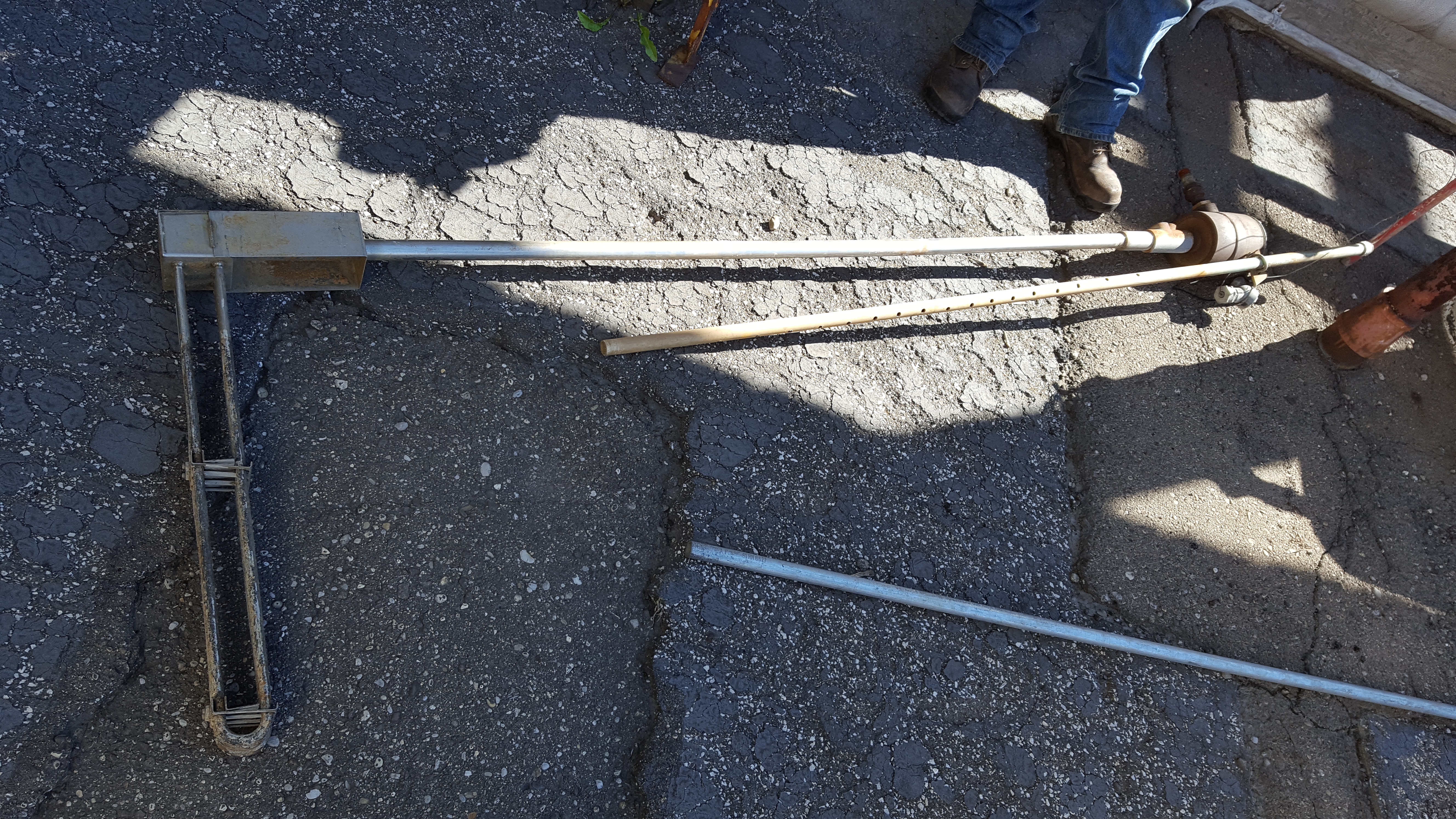
Sometimes, calcification occurs after a period of time on the elements. This is from normal wear and tear and needs to be considered when creating a maintenance schedule for your heaters. Heaters will eventually have deposits adhere to the sheath which can cause problems down the road as the heat transfer from the element to the liquid is hindered.
This stainless steel over the side heater is a good example of hard water that needs to be treated to prevent scaling. This heater was in a water treatment plant using a temperature controller that had a Type J thermocouple attached to the element sheath. This was a way of detecting elevated heat levels before failure. Once the alarm was triggered, the heater was taken out of the open tank and cleaned of the deposits. It was then reinserted back into the tank.
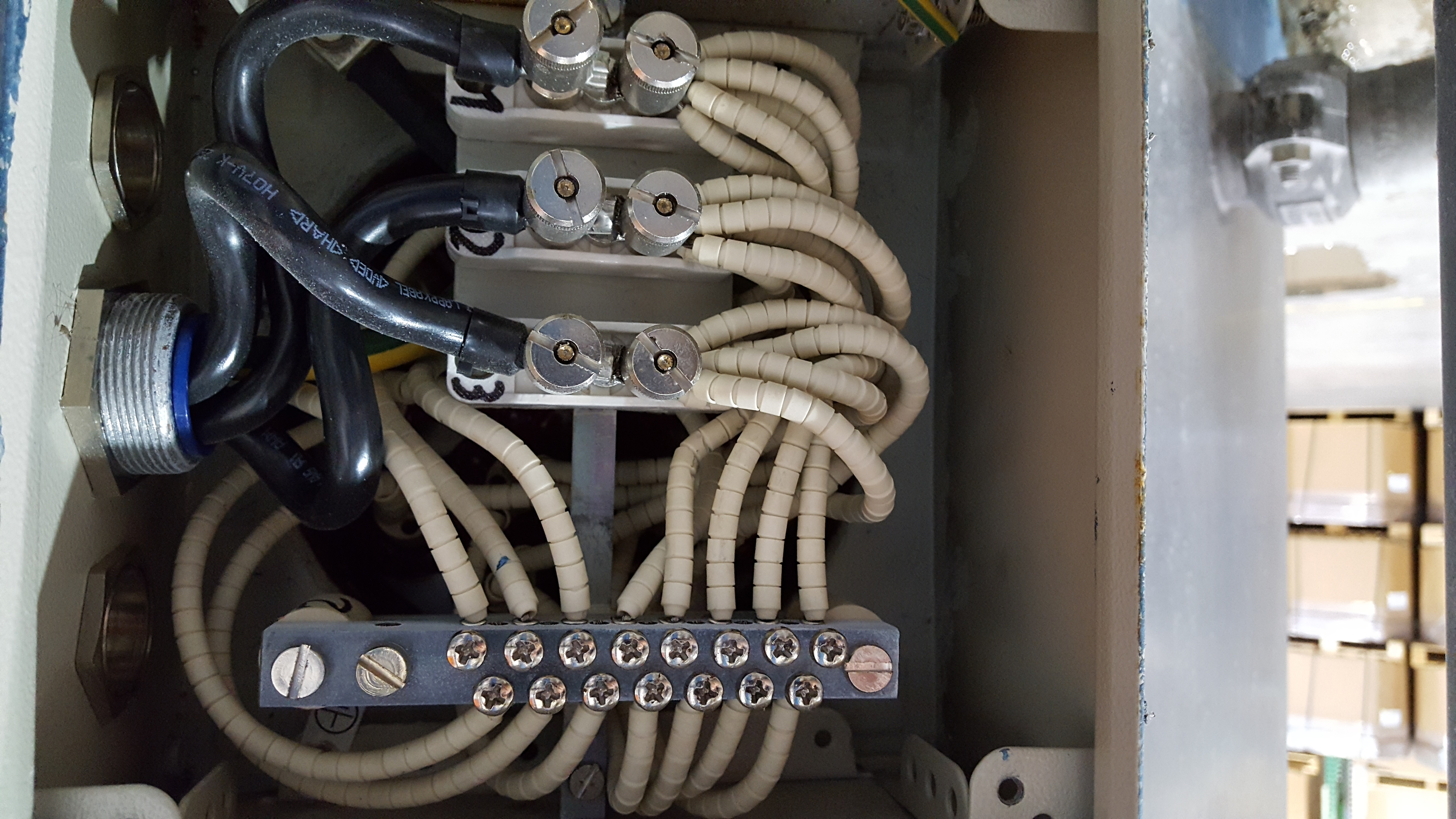 What other ways are there to protect my termination wires from excessive heat?
What other ways are there to protect my termination wires from excessive heat?
Sometimes termination wires can be prone to higher heat levels as a result of the operating environment. Ceramic interlocking insulated beads can be used to protect wires from elevated temperatures.The advantages are they are flexible (with limitations) but are an excellent method to insulated wires. They offer good mechanical strength however you should take into consideration the wire gauge you use.
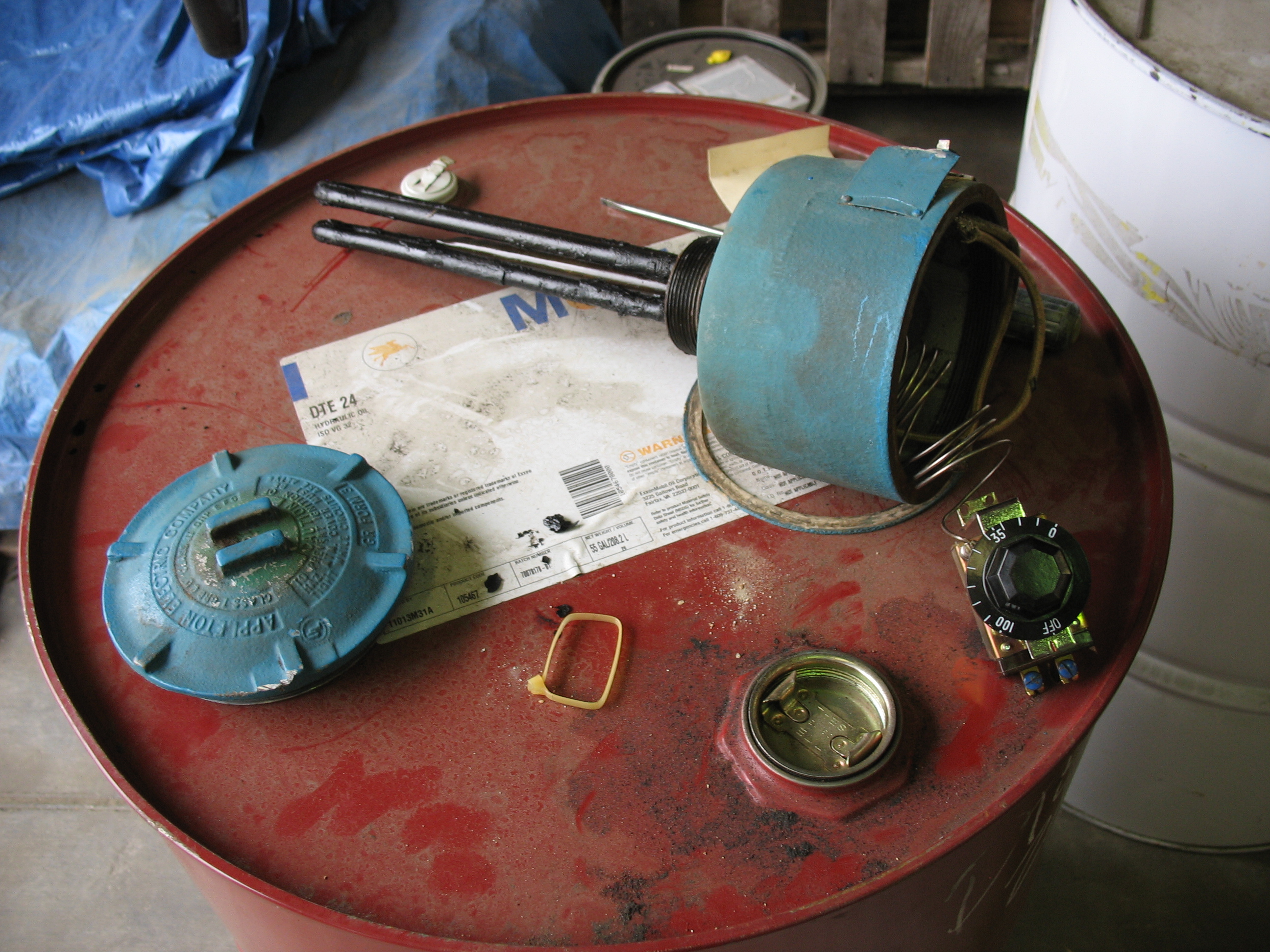 “I have an agitator tank heater. What kind of maintenance should I consider?”
“I have an agitator tank heater. What kind of maintenance should I consider?”
Mechanical thermostat is a popular type of control because it is inexpensive and easy to replace. The problem is that they can be prone to external damage or neglect and sometimes requires a call to action to avoid operational downtime. If you look at the image to the left, you will see residue on the elements. This can be caused by oil residue. The viscosity of the oil is also another factor as a thicker film stuck on the heater can cause more serious problems. Lastly, you can see that there is a thermowell within the bundle of elements. This is for the bulb capillary. The probe takes the temperature of the liquid (and the elements) and regulates the temperature accordingly. But if the heater is placed on top of the barrel, be careful – if the level of the liquid falls too far below, the heater might overheat and fail. A float bulb can be used to make sure the liquid remains at the proper levels.
 When should I replace my heater?
When should I replace my heater?
Its human nature to be reactive rather than proactive – but there is always a cost to that strategy. Downtime can cost much money in lost sales and missed opportunities. When an immersion heater is warped, rusted and years in use, it is a good idea to consider replacement for a new more efficient model to avoid problems down the road. It this image you see a steel flanged immersion heater that has been in use for several years that needs replacement. Additional improvement to this example would be to install a water resistant terminal box to protect the terminations from abuse or corrosion.
What immersion length should I consider for my immersion heater?
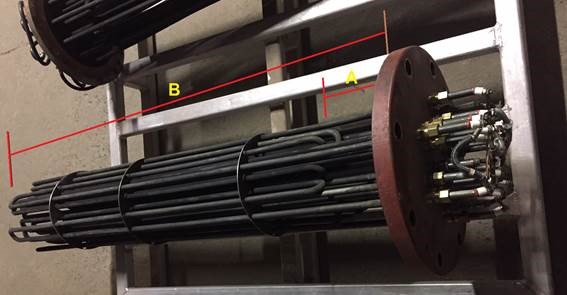 Immersion heaters can be custom designed for any length however there is a direct relationship between the immersion length (“B”) of elements and the watt density of the heater (see above for explanation of watt density). If a lower watt density is required for an application, the immersion length needs to be increased to reduce the amount of wattage in a given area. This will allow for a gradual, more stable and less intensive “thrust” of power. To put it in different terms, think about your stove element. If you turn it on to a “high” setting, you will notice the element gets warm (but its color is still black) and gradually shifts to a bright red. The bright red color is the elements maximum temperature given its low watt density design to be able to function in plain air. In the picture to the left, you will see a boiler heater that has the elements in a foldback pattern (as oppose to a hairpin pattern). By almost doubling the length of the heater, the watt density can be reduced significantly. Alternatively, more power can be added for the same length while maintaining the required watt density – making this a very strong heater. Section “A” of the heater is the cold section of the heater that is an additional safety factor to avoid terminal from overheating.
Immersion heaters can be custom designed for any length however there is a direct relationship between the immersion length (“B”) of elements and the watt density of the heater (see above for explanation of watt density). If a lower watt density is required for an application, the immersion length needs to be increased to reduce the amount of wattage in a given area. This will allow for a gradual, more stable and less intensive “thrust” of power. To put it in different terms, think about your stove element. If you turn it on to a “high” setting, you will notice the element gets warm (but its color is still black) and gradually shifts to a bright red. The bright red color is the elements maximum temperature given its low watt density design to be able to function in plain air. In the picture to the left, you will see a boiler heater that has the elements in a foldback pattern (as oppose to a hairpin pattern). By almost doubling the length of the heater, the watt density can be reduced significantly. Alternatively, more power can be added for the same length while maintaining the required watt density – making this a very strong heater. Section “A” of the heater is the cold section of the heater that is an additional safety factor to avoid terminal from overheating.
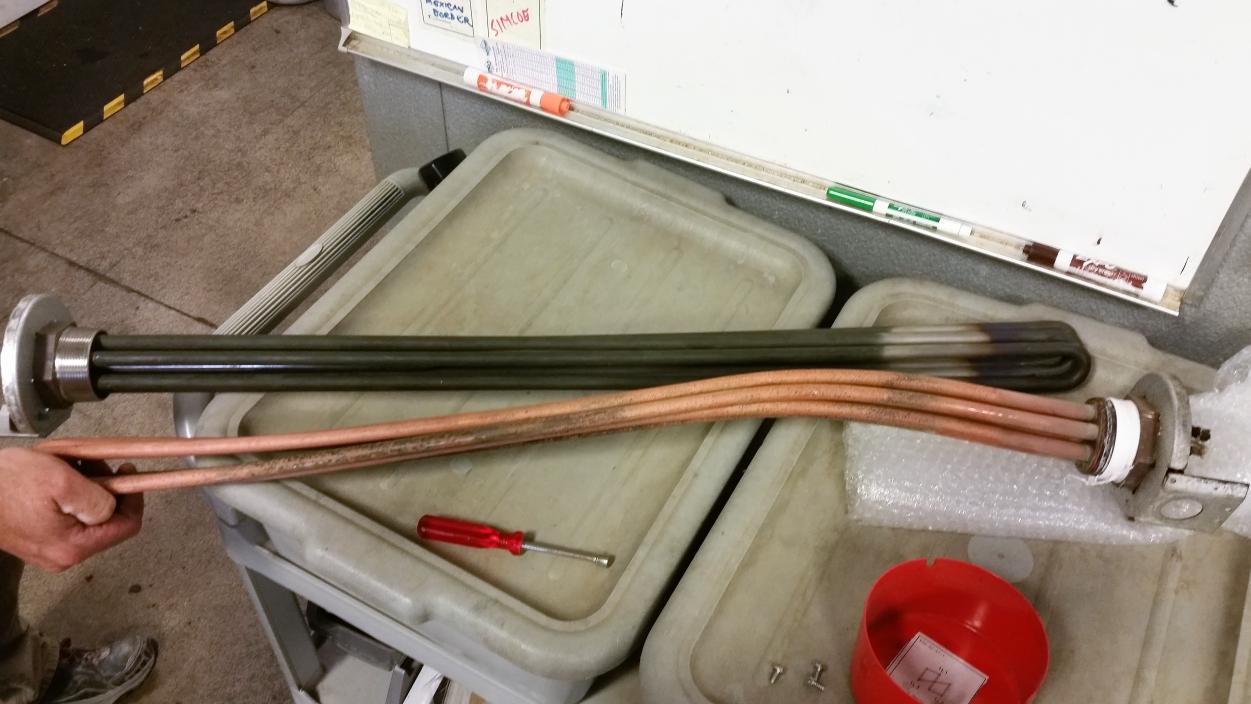 What’s the difference between using copper elements or stainless steel?
What’s the difference between using copper elements or stainless steel?
Copper is a very malleable and corrosion resistant alloy that is often used in many applications such as home heating, plumbing, marine engineering, shipbuilding, and other industrial processes for heat transfer. Copper is a very good conductor and relatively inexpensive. It can transfer heat up to 20 times faster than stainless steel so it is an excellent material to use for quick heating. One drawback however is that it is a soft material that can be prone to warping in a horizontal application. Over time, gravity and sedimentation buildup can warp the elements and affect its durability. The longer the immersion length, the more prone the heater will get to warping as a result of the additional weight.
Stainless steel has a property known as passivation that adds to its resilience against corrosion that protects it from rust and allows for a longer lifespan. The lifespan of copper is adversely affected from corrosion as the metal dissolves over time and affects its longer term thermal conductivity.
Where in my tank should I place my screwplug heater?
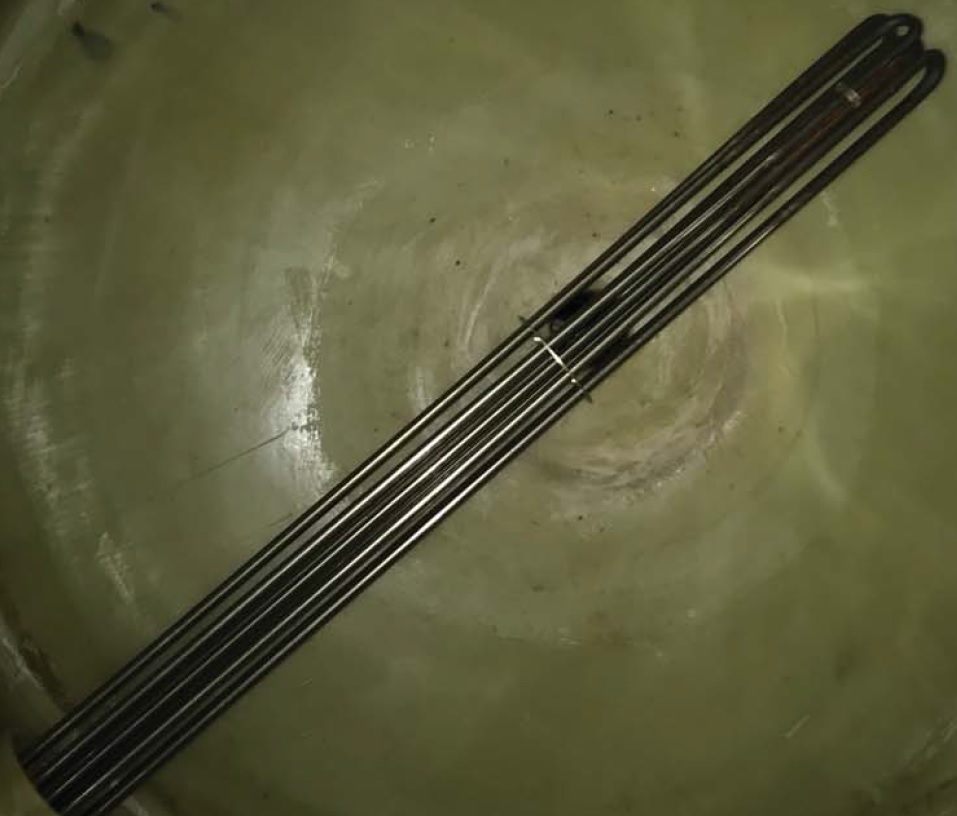 For even heat distribution, it is best to place the heater in the center of the tank so an even flow of liquid passes through each hairpin element and effectively removes the heat from the sheath. The bundle should also be at the bottom of the tank as heat rises and it will heat upwards in a linear fashion. Another good practice is to place a thermostat or thermocouple probe at the other end of the tank so that the operating temperature will account for the location farthest from the heater. This could ensure an even heat distribution so long as the tank is well insulated. In the image to the left, you can see the elements need some maintenance (there is a collection of sedimentation on the sheaths) but the location of the heater is well placed.
For even heat distribution, it is best to place the heater in the center of the tank so an even flow of liquid passes through each hairpin element and effectively removes the heat from the sheath. The bundle should also be at the bottom of the tank as heat rises and it will heat upwards in a linear fashion. Another good practice is to place a thermostat or thermocouple probe at the other end of the tank so that the operating temperature will account for the location farthest from the heater. This could ensure an even heat distribution so long as the tank is well insulated. In the image to the left, you can see the elements need some maintenance (there is a collection of sedimentation on the sheaths) but the location of the heater is well placed.
How can I arrange my circulation heater?
Circulation heaters can be mobile on caster wheels to accommodate applications involving confined spaces. On the left you can see a heater on a small skid that has a digital control panel. In this image the end user used this heater for several tubs. The heater is stainless steel (it was a food application) and had a motor and pump located beneath the sink to allow for an even flow.
Immersion Heaters: Before and After they were cleaned
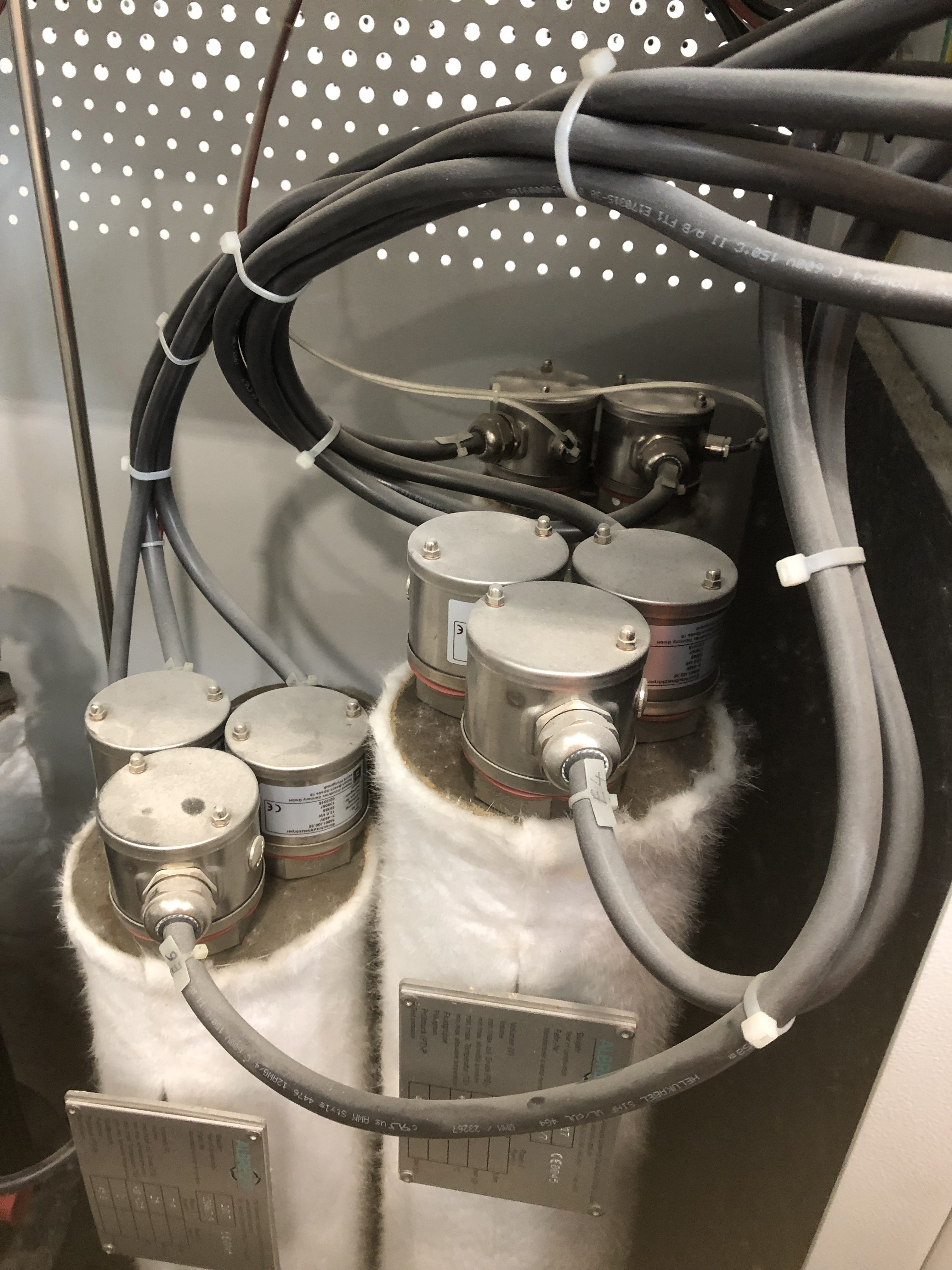 How important is insulation in circulation heaters?
How important is insulation in circulation heaters?
There are many advantages to insulating your heaters. Thermal insulation allows for efficiency in your operations as you use less energy to heat your liquid. It is a relatively inexpensive way to extend the life of your heaters as less energy is dispensed to achieve the same temperature. Insulation should also be used in tanks for the same reason. If your application is outdoors and the heater is exposed to colder outdoor climate, this additional step would be most useful. For circulation heaters, adding insulation does not interfere with its operations and, when replacing elements (during maintenance), the insulation can remain on the vessel.


